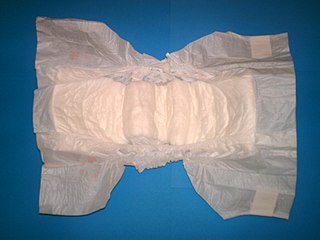
A diaper or a nappy is a type of underwear that allows the wearer to urinate or defecate without using a toilet, by absorbing or containing waste products to prevent soiling of outer clothing or the external environment. When diapers become wet or soiled, they require changing, generally by a second person such as a parent or caregiver. Failure to change a diaper on a sufficiently regular basis can result in skin problems around the area covered by the diaper.

A towel is a piece of absorbent cloth or paper used for drying or wiping a surface. Towels draw moisture through direct contact.

Washing is a method of cleaning, usually with water and soap or detergent. Washing and then rinsing both body and clothing is an essential part of good hygiene and health.

Hand washing, also known as hand hygiene, is the act of cleaning one's hands with soap or handwash and water to remove viruses/bacteria/microorganisms, dirt, grease, or other harmful and unwanted substances stuck to the hands. Drying of the washed hands is part of the process as wet and moist hands are more easily recontaminated. If soap and water are unavailable, hand sanitizer that is at least 60% (v/v) alcohol in water can be used as long as hands are not visibly excessively dirty or greasy. Hand hygiene is central to preventing the spread of infectious diseases in home and everyday life settings.

Microfiber is synthetic fiber finer than one denier or decitex/thread, having a diameter of less than ten micrometers.
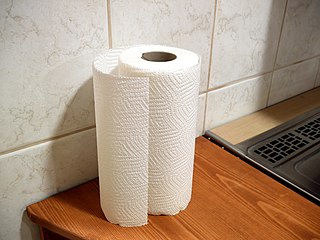
A paper towel is an absorbent, disposable towel made from paper. In Britain, paper towels for kitchen use are also known as kitchen rolls, kitchen paper, or kitchen towels. For home use, paper towels are usually sold in a roll of perforated sheets, but some are sold in stacks of pre-cut and pre-folded layers for use in paper-towel dispensers. Unlike cloth towels, paper towels are disposable and intended to be used only once. Paper towels absorb water because they are loosely woven, which enables water to travel between the fibers, even against gravity. They have similar purposes to conventional towels, such as drying hands, wiping windows and other surfaces, dusting, and cleaning up spills. Paper towel dispensers are commonly used in toilet facilities shared by many people, as they are often considered more hygienic than hot-air hand dryers or shared cloth towels.
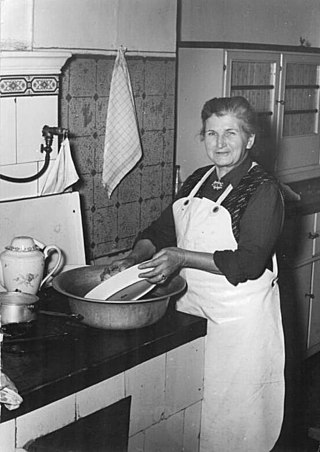
Dishwashing, washing the dishes, doing the dishes, or washing up in Great Britain, is the process of cleaning cooking utensils, dishes, cutlery and other items to prevent foodborne illness. This is either achieved by hand in a sink using dishwashing detergent or by using a dishwasher and may take place in a kitchen, utility room, scullery or elsewhere.
The term cleanser refers to a product that cleans or removes dirt or other substances. A cleanser could be a detergent, and there are many types of cleansers that are produced with a specific objective or focus. For instance, a degreaser or carburetor cleanser used in automotive mechanics for cleaning certain engine and car parts.

A bathrobe, also known as a housecoat or a dressing gown, is a loose-fitting outer garment worn by people, often after washing the body or around a pool. A bathrobe is considered to be very informal clothing, and is not worn with everyday clothes.

Ghusl is an Arabic term to the full-body ritual purification mandatory before the performance of various rituals and prayers, for any Muslim after sexual intercourse before Friday prayer and prayers for Islamic holidays, before entering the ihram in preparation for Hajj, after having lost consciousness, and after formally converting. Sunni Muslims also perform the ablution before Salat al-Tawba "Prayer of Repentance".

A car wash, or auto wash, is a facility used to clean the exterior, and in some cases the interior, of cars. Car washes can be self-service, full-service, or fully automated. Car washes may also be events where people pay to have their cars washed by volunteers, often using less specialized equipment, as a fundraiser.

Chamois leather is a type of porous leather, traditionally the skin of the chamois, a type of European mountain goat, but today made almost exclusively from the flesh split of a sheepskin.
A layette is a collection of clothing and accessories for a newborn child. The term "layette set" is commonly used in the United States to refer to sets of baby clothes. In the 1920s, expectant mothers or their friends and relatives frequently knitted a matching layette set, consisting of a blanket, hat, sweater and booties. Expectant parents today are more likely to purchase pre-curated layette sets from brands.
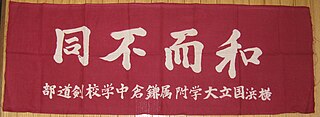
A tenugui is a traditional Japanese hand towel made from cotton. It dates back to the Heian period or earlier. By the Edo period, tenugui became what they are today; about 35 by 90 centimetres in size, plain woven, and almost always dyed with plain color or some pattern. The long sides are finished with a selvage, while the short sides are left unfinished to allow fraying.
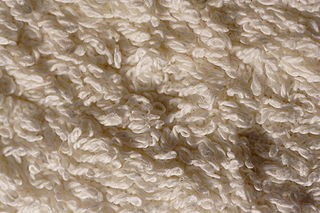
Terrycloth, terry cloth, terry cotton, terry toweling, terry, terry towel, Turkish toweling (formerly), or simply toweling is a fabric woven with many protruding loops of thread which can absorb large amounts of water. It can be manufactured by weaving or knitting. Terrycloth is woven on special looms that have two beams of longitudinal warp through which the filler or weft is fired laterally.

A hand dryer is an electric machine which might make use of a heating element and an air blower to dry the hands after hand washing. It is commonly used in public toilets as a cost-effective alternative to paper towels.
Personal care products are consumer products which are applied on various external parts of the body such as skin, hair, nails, lips, external genital and anal areas, as well as teeth and mucous membrane of the oral cavity, in order to make them clean, protect them from harmful germs and keep them in good condition. They promote personal hygiene and overall health, well-being and appearance of those body parts. Toiletries form a narrower category of personal care products which are used for basic hygiene and cleanliness as a part of a daily routine. Cosmetic products, in contrast, are used for personal grooming and beautification. Pharmaceutical products are not considered personal care products.
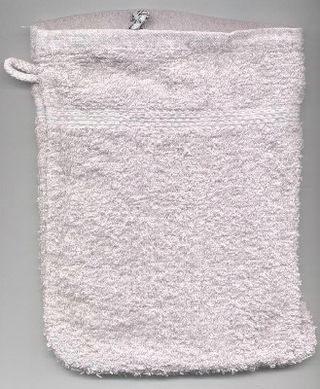
A washing mitt is a piece of terry cloth shaped like a pouch that the hand fits in. It is used as a type of washcloth to aid in washing the body, for example, to apply soap to the body, and to remove the soap with a rinsed out washing mitt. It can also be used to freshen up the face. Usually, a towel is used to dry off the body afterwards.
Salux cloth also called Salux nylon, is a type of Japanese washcloth originating in 1966 made of part nylon and polyester. The cloth is known for its ability to soften and smooth skin. Salux may also reduce ingrown hairs after shaving and help with exfoliation. Salux won the Japanese Invention Award in 1974.

The Italy towel, also known as the Korean exfoliating mitt or Korean exfoliating towel, is a mass-produced bath product used to scrub and peel the outermost layer of skin; it was invented in Busan by Kim Pil-gon in 1962. Since then, the Italy towel has become a household item in Korean homes and a staple item in Korean saunas. The Italy towel is also used in other areas of Asia such as Thailand, the north of China, Central Asia and Japan.
















